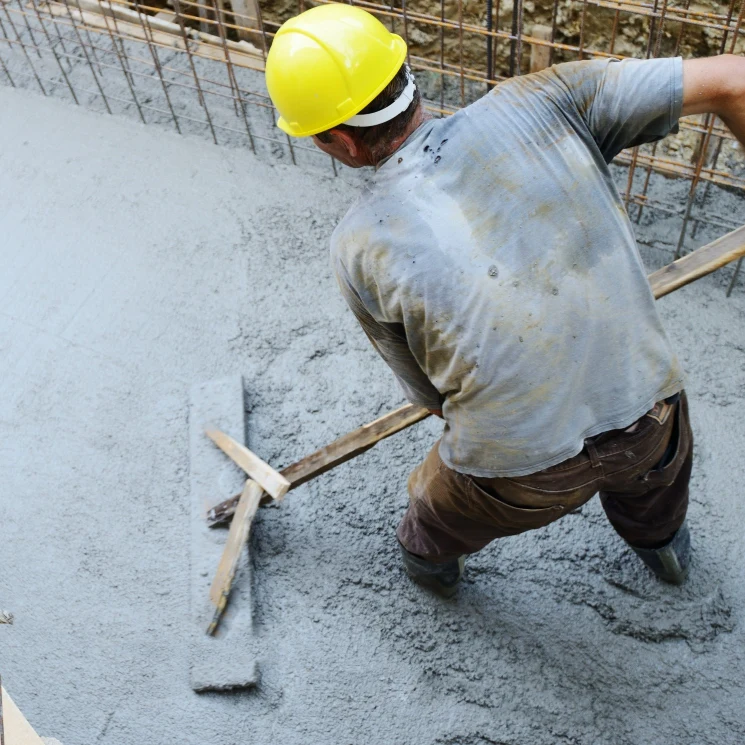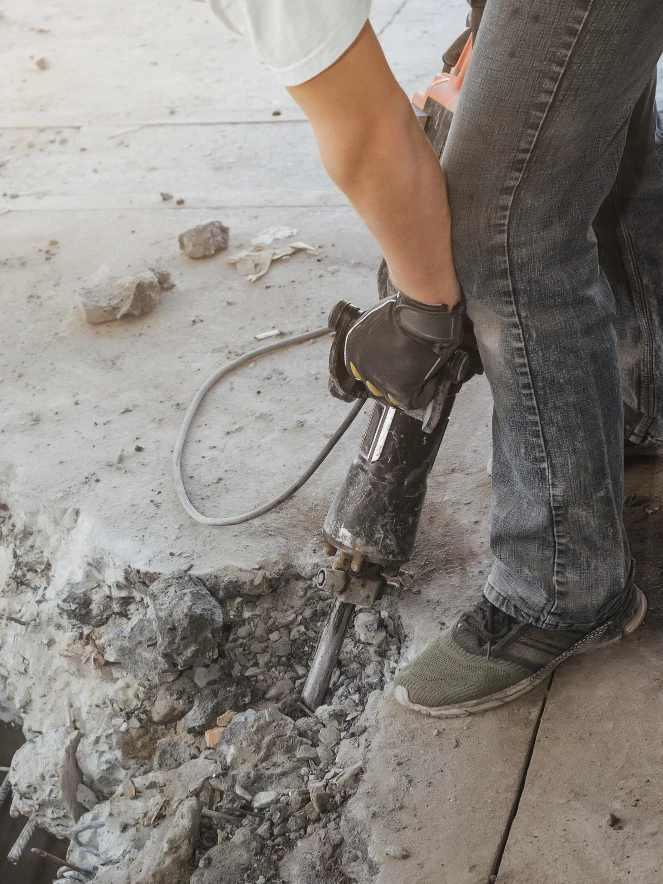Stained concrete is a great option for those who want to add an aesthetic touch to their home without having to install expensive stones. Stained concrete can achieve any aesthetic you desire without much expense, both in time and money. This is exactly why it is such a popular choice among many homeowners. Even though stained concrete has many advantages over alternative ways to achieve the same look, it has a flaw that cannot be overlooked: stained concrete requires maintenance. Keeping stained concrete looking its best is not that difficult, especially in comparison to natural stones, but it does lose its beauty faster. After a few years, your floors may lose some of their original beauty, but there are ways to bring the original shine and color back.
What Is Stained Concrete?
Before we can start the restoration process, it’s important to understand what stained concrete is, how it is made, and how it works. This information helps to grasp why the cleaning process for stained concrete is the way it is. Stained concrete is made by applying a chemical solution to the surface of the concrete. This solution aims to create a permanent color change in the concrete. There are two types of concrete stains: water-based stains and acid-based stains.
Acid-Based Stains
Acid-based stains work by applying a chemical solution that penetrates the surface of the concrete, reacting with the minerals inside the concrete and creating a shift in color. The result depends on many factors but usually isn’t a solid color; it forms streaks and patches, giving the concrete a marble look.
Water-Based Stains
Water-based stains are much simpler. A water-based stain is similar to a coat of paint over the concrete. Water-based stains come in a wider range of colors, and they are easy to apply.
The First Step: Assessing the Current Condition
The first step to bringing your stained concrete floors to life is assessing the situation and deciding what you want to do. Inspect the concrete and look for fading or discoloration, surface cracks or chips, and any stains.
If the concrete has a lot of surface cracks it may be smart to forget about resurrecting your floors and alternatively opting for a resurface. A resurfacing service from a professional concrete company doesn’t come at too much of a cost and it results in a look that’s better than new.
If you want more of a DIY approach small cracks can be easily patched up with colored concrete filler which is indistinguishable after it is sealed and polished. Unfortunately, bigger cracks will be more obvious.

It is not a bad idea to contact a stained concrete contractor, and allow them to take over the project, these professionals will deliver great results that an inexperienced person may not be able to achieve.
How To Resurrect Stained Concrete Floors
Cleaning The Surface
Properly cleaning the surface before actual restoration is crucial to achieving great results. First, you need to clean any dust and debris away. Then, wash the concrete with water. For a deeper cleaning apply a cleaner to the area but be careful not to apply too much to areas with discoloration as this may damage the concrete further. With the cleaner applied use a brush to scrub the floor. This ensures every last piece of dust is removed from the concrete. After scrubbing wash the surface with water again and allow it to dry.
Restoration
Now that the surface is clean it is time to start the restoration process. You can use a stained concrete filler that best matches the color of your floors and start filling in those small gaps, cracks, and chips. Ensure you are using a cementitious product and not a caulk or silicone-based filler. After filling these areas in ensure they are level, remove any excess, and make sure not to apply too much as it is easier to add a bit more than to clean up a big mess. Now you need to let the filler cure, this should take about 24-48 hours. After the filler is completely cured you need some sand paper. The surface of the filler has a different texture in comparison to the floor so you need to sand the filler until it they both have the same texture. Sanding the surface helps to get the filled parts level and achieve a consistent look.

Concrete Staining
With the surface cleaned and repaired it is time to restore the luster and the original color of the concrete. First, you need to decide between a water-based and acid-based stain.
Acid-based stains have higher durability and they last longer. But, they are more expensive. In comparison, water-based stains offer more colors and an easier process and they are almost half the price of an acid-based stain. Check for compatibility with the stain that is already on your floors.
Before applying the stain, test it in a small section to ensure there aren’t any problems. If you don’t see any irregularities apply the stain as instructed on the bottle. It may be useful to have a brush, roller, or sprayer to make the application process easier.
After you evenly apply the stain allow it to dry for 24-48 hours. Some stains require additional coats.
Seal
Sealing stained concrete is an essential step in protecting it from the elements, a seal extends the lifespan of the stain by a large margin. A good and high-quality seal will provide a protective layer against, water, spills, and UV damage, a quality seal will even allow the color to pop in a better way. You can get many different types of concrete seals that will achieve different finishes, from matte to glossy.
After you’ve made your decision and purchased your seal, apply it as instructed on the product and allow it to dry. Consider that a seal may also benefit from a second or even third coat.
Maintenance
Now that you have a new concrete floor ready and looking great, ensure to take good care of it. There are a couple of simple rules to follow, that will extend the life of your floors by a lot.
Regular cleaning
cleaning the surface regularly and preventing dust accumulation is a great step in protecting your floors. Dust will create micro scratches on the surface which will trap more dust and create bigger scratches.
Cleaning spills
If anything spills on the floors it is important to act quickly to ensure it doesn’t stain and ruin the surface.
Re-seal
Depending on the traffic of the area, reapplying a seal every 1-3 years is a good way to maintain protection and prevent the need for a whole restoration process as much as possible.
Harsh chemicals
Chemicals may damage and destroy the surface of your floors/ When cleaning stained concrete floors, it is crucial to stay away from harsh chemicals and instead opt for safer cleaning agents.
The Bottom Line
Stained concrete floors require constant upkeep and maintenance in order to look their best. If the state of your concrete floors calls for a restoration or resurfacing it is important to consider professional help. This process is not easy. It takes time effort and dedication, all challenges that a professional concrete company can deal with. Professionals are called professionals for a reason, no space is too big.
As an experienced concrete contractor in Michigan, we offer you our concrete services. Whether you decide to repair your existing floor, resurface it to make it look better than new, or even rip the entire floor out and redo it, you can count on us. We offer you decorative stained concrete floors with any pattern, shape, or design you require. GB Cement, your top-tier concrete contractor in Michigan, is here to help!
Contact Us Now!
Frequently Asked Questions
What are the main differences between acid-based and water-based concrete stains?
Acid-based stains penetrate the concrete and create a more permanent, variegated color, while water-based stains are easier to apply and come in a wider variety of colors.
How often should I reseal my stained concrete floors?
It's generally recommended to reseal your floors every 1-3 years, depending on the amount of traffic and wear they experience.
Can I apply a new stain over an existing stained concrete floor?
Yes, but it's crucial to clean the surface thoroughly and test a small area first to ensure compatibility and avoid any adverse reactions.
What tools do I need for applying concrete stain and sealer?
Depending on the type of stain, you may need brushes, rollers, or sprayers. For the sealer, a roller or sprayer is typically used.
Is it necessary to hire a professional to restore stained concrete floors?
While DIY restoration is possible, hiring a professional can ensure the best results, especially for extensive repairs or large areas.
Can stained concrete floors be polished for added shine?
Yes, after cleaning and resealing, you can polish your stained concrete floors to enhance their shine and aesthetic appeal.

